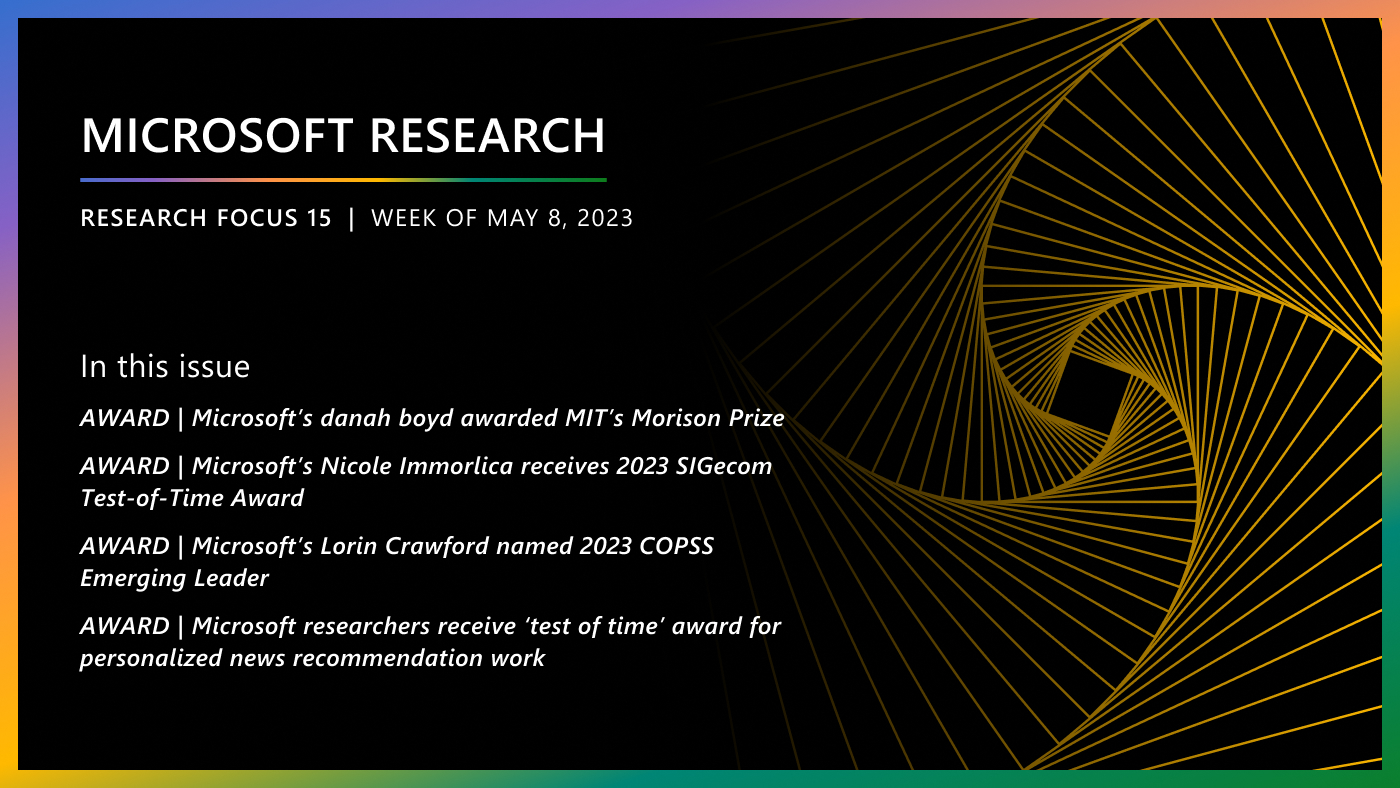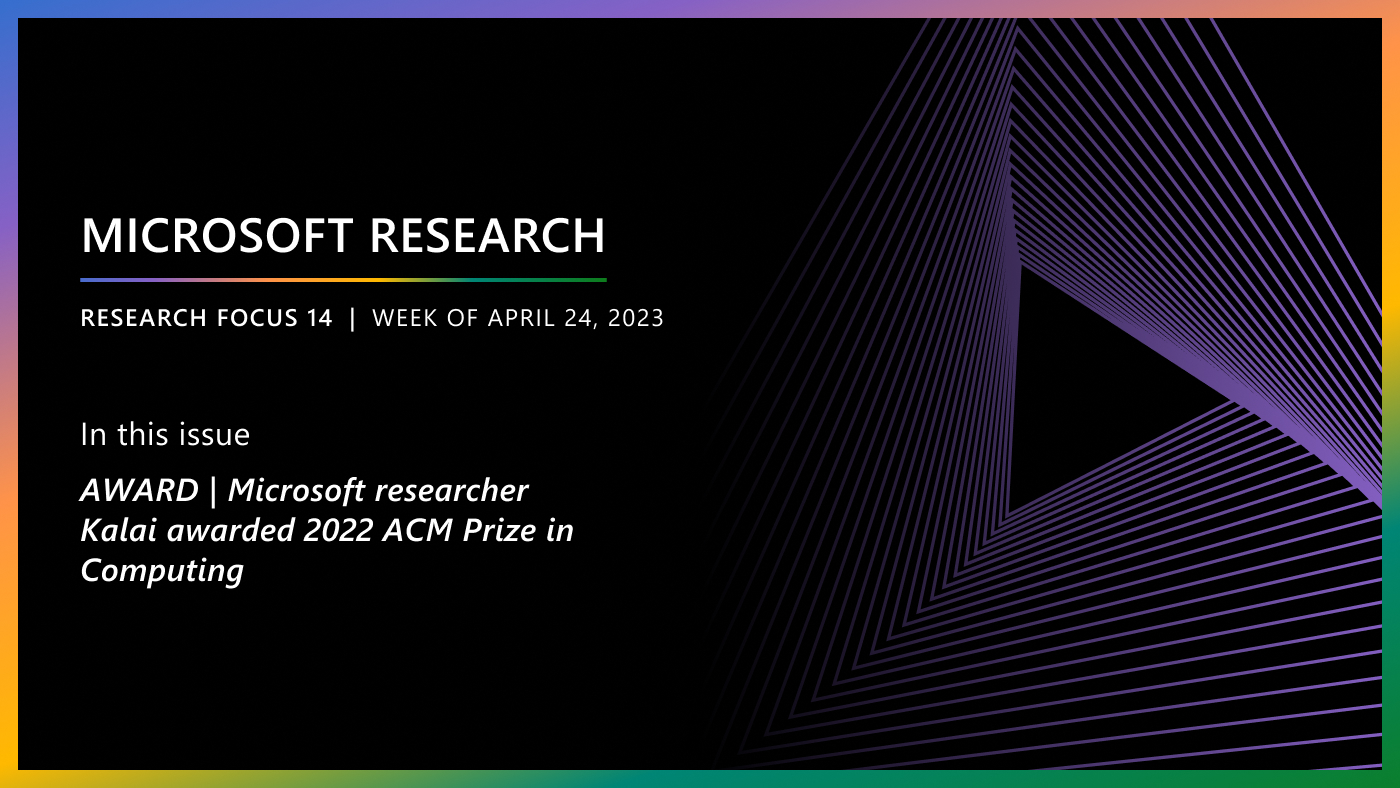
Welcome to Research Focus, a new series of blog posts that highlights notable publications, events, code/datasets, new hires and other milestones from across the research community at Microsoft.
High-throughput ab initio reaction mechanism exploration in the cloud with automated multi-reference validation
Jan P. Unsleber, Hongbin Liu, Leopold Talirz, Thomas Weymuth, Maximilian Mörchen, Adam Grofe, Dave Wecker, Christopher J. Stein, Ajay Panyala, Bo Peng, Karol Kowalski, Matthias Troyer, Markus Reiher
Quantum chemical calculations on atomistic systems have evolved into a standard approach to studying molecular matter. These calculations often involve a significant amount of manual input and specific process considerations, which could be automated and allow for further efficiencies. In our recent paper: High-throughput ab initio reaction mechanism exploration in the cloud with automated multi-reference validation, we present the AutoRXN workflow, an automated workflow for exploratory high-throughput electronic structure calculations of molecular systems. In this workflow, (i) density functional theory methods are exploited to deliver minimum and transition-state structures and corresponding energies and properties, (ii) coupled cluster calculations are then launched for optimized structures to provide more accurate energy and property estimates, and (iii) multi-reference diagnostics are evaluated to back check the coupled cluster results and subject them to automated multi-configurational calculations for potential multi-configurational cases. All calculations are carried out in a cloud environment and support massive computational campaigns. Key features of all components of the AutoRXN workflow are autonomy, stability, and minimum operator interference. We highlight the AutoRXN workflow at the example of an autonomous reaction mechanism exploration of the mode of action of a homogeneous catalyst for the asymmetric reduction of ketones.
Spotlight: blog post
Disparate Impacts on Online Information Access during the COVID-19 Pandemic
Jina Suh, Eric Horvitz, Ryen W. White, Tim Althoff
Despite efforts to close the long-term and emergent health equity gap, studies during the COVID-19 pandemic show that socioeconomically and environmentally disadvantaged subpopulations have been disproportionately harmed by the disease[1]. Digital access to health services and information has also emerged as an important factor modulating health outcomes. During the pandemic, digital engagement in resources across health, educational, economic, and social needs became a necessity due to lockdown mandates and increased use of internet-based communication by public institutions. Unfortunately, disparities in digital access also reflect socioeconomic and environmental dimensions, which can lead to negative offline consequences, creating a “digital vicious cycle”[2]. Therefore, it is a public health priority to identify vulnerable populations and to understand potential barriers to critical digital resources.
In a new paper: Disparate Impacts on Online Information Access during the COVID-19 Pandemic (opens in new tab), published in Nature Communications (opens in new tab), researchers from Microsoft Research and the University of Washington have collaborated to harness the centrality of web search engines for online information access to observe digital disparities during the pandemic. They analyzed over 55 billion web search interactions on Bing during the pandemic across 25,150 U.S. ZIP codes to reveal that socioeconomic and environmental factors are associated with the differential use of digital resources across different communities – even if they were digitally connected.
DeepSpeed Data Efficiency library: Towards less data, faster training, and higher model quality
DeepSpeed Team, (opens in new tab) Andrey Proskurin (opens in new tab)
DeepSpeed (opens in new tab) has released a new Data Efficiency library (opens in new tab) to optimize deep learning training efficiency and cost. The library offers new algorithms on efficient data sampling/scheduling via curriculum learning and efficient data routing via random layerwise token dropping, together with composable and customizable library support. The library greatly reduces training cost while maintaining model quality (1.5-2x less data and time for GPT-3/BERT pretraining), or further improves model quality under the same training cost (>1 point gain for GPT-3-1.3B zero/few-shot evaluation). The code is open-sourced at https://github.com/microsoft/DeepSpeed (opens in new tab).
You can learn more in our blog post (opens in new tab) and in the papers below.
Research Fellows Program at Microsoft Research India – Apply now
The Research Fellows Program at Microsoft Research India is now accepting applications for Fall 2023. This is an opportunity to work with world-class researchers on state-of-the-art technology. The program prepares students for careers in research, engineering, and entrepreneurship, while pushing the frontiers of computer science and technology. Previous Research Fellows have contributed to all aspects of the research lifecycle, spanning ideation, implementation, evaluation, and deployment.
Selected candidates spend one to two years with Microsoft Research India. Candidates should have completed BS/BE/BTech or MS/ME/MTech in Computer Science or related areas, graduating by summer 2023. Apply before February 3, 2023 (opens in new tab).





